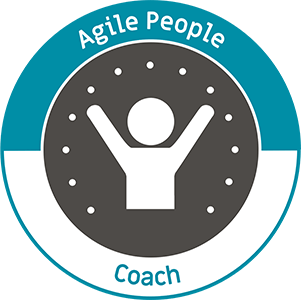Agile People Coach
About
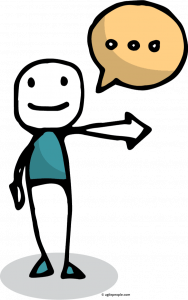
In the future of work HR and Managers will need to take the role of Agile People Coaches, with the necessary competence about basic human needs, behaviors, teamwork, and how to support an emerging strategy towards the organization’s purpose.
The Agile People coach is an alternative career for traditional managers and HR representatives in the future of work. An Agile People Coach is more than an Agile Coach, although the basic understanding of agile values, agile tools and methods, systems theory, and organizations are the same. The difference lies in the deeper People’s perspective. During this training, you will learn how to coach people to find a place where they can be the best they can be and how to create conditions for people to perform together.
Gain awareness about tools, methods, models, and frameworks, for making teams perform. Understand how to enable teams to work cross-functionally between departments by gaining knowledge of new ways of working that will promote communication across usual boundaries – like the Buddy System, Beyond Budgeting or OKR:s. Last, but not least, you will learn how strategies emerge and adapt and how to involve all people in the organization in the emerging strategy creation. When people continuously improve and learn in a common direction, and when mistakes are seen as learning opportunities, we can create that psychologically safe culture that forms the foundation for a learning organization. And when people feel safe to be vulnerable in front of peers, we know we have succeeded.
Duration
24 Hours
Level
Foundational
Course Information
Learning Outcomes
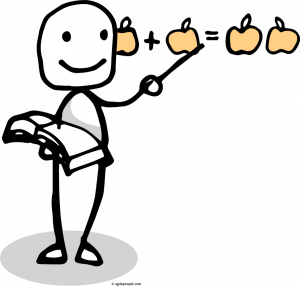
Agile People Principles – The platform for decision-making in a complex environment where the only competitive advantage is learning faster than competitors.
The importance of Psychological Safety – How we can work actively to create a working environment that is characterized by a common view of how we can unlock everyone’s potential by making it ok to experiment and make mistakes and learn from them.
How to balance an agile culture with agile structures – Supporting an emerging strategy where people are involved in goal setting and creating a common direction (via OKRs or other types of relative goals instead of fixed budgets and performance goals)
How to work on behavioral changes in social systems to achieve an agile mindset and agile culture – Changing limiting structures (for example: annual budgets linked to fixed performance goals and rewards).
To develop a Learning Organization – Enabling collaboration between Functional silos.
How HR and management can support an agile organizational transformation – How to assess the current organizational structure and design a new structure that enables business agility, maximizes communication and collaboration within and among teams, and enables the flow of value.
Agile People Coaching – Learn methods for coaching and how the Agile People Coach role differs from agile coaching.
Self-assessment – understand your own capabilities and how to improve these.
Self-leadership – develop an understanding of what motivates you and how to communicate with other people to understand their motifs.
Conflict Coaching – learn how to create a balance between harmony and conflict in teams and organizations.
Target Audience

Agile coaches, consultants, HR managers, HR Business Partners, HR professionals, line managers, operational & business managers and consulting managers in both the private and public sectors.
ICAgile Certified
This training can lead to a certification by International Consortium for Agile (ICAgile), a certification and accreditation body, if combined with the Agile People HR or Agile People Leadership workshop. ICAgile works with course providers to accredit new or existing courses against comprehensive and proven Learning Outcomes. ICAgile collaborate with worldwide agile thought leaders to develop learning programs that lead people to agile mastery. Learn more about ICAgile
Agile People is an ICAgile Member Organization.
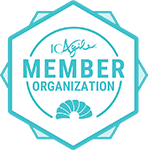
Training Program
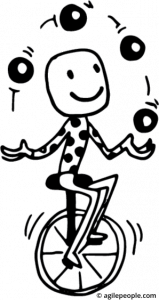
For this training, you will take part in a 3-day in-person workshop or 16 online sessions.
Day 1: Session F1-5 Agile People Fundamentals
Session F1: Introduction to Agile People and important principles/tools
The foundation of Agile Peoples’ mindset is about the principles, values, methods, and tools that we need to start using to release competence and innovation – and what we stop doing. We discuss your challenges and certification assignment.
Session F2: Psychological safety as a foundation for a learning organization
The importance of an approach that is permeated by security and confidence to increase profitability and innovation – to increase creativity through a culture where it is ok to fail and try again. We play “The Psychological Safety Game” to facilitate dialogue about difficult topics
Session F3: Emerging strategies, structures, and goals
Emerging strategies instead of long-term planning, new ways of working with strategy, budgets, goals, performance processes, and rewards. Using value stream mapping to optimize flows in a system instead of working with resource optimization and sub-optimization of departments. Mindset Slider exercise. WoWs to be used: Beyond Budgeting, OKRs, Impact Mapping, VSM, etc.
Session F4: Building conditions for agile culture
Creating conditions for a fantastic culture where people can perform at their optimal level with a sense of being supported and secure. The gap between structures and culture/values. Structure – Culture Misfit Role Play. The importance of country culture for an Agile transformation.
Session F5: The learning Organization as Strategy and the future role of HR and managers
Boundary Spanning and the Buddy System to increase cross-border collaboration and increase the opportunity to create a fantastic organization together. Tips and examples for the change journey and how HR and managers need to change their role to support it.
Day 2: Sessions C1-4 Deep dive into Agile People Coaching
Session C1: Introduction to Agile Coaching and the four roles of a coach
Mentoring, teaching, facilitating, and coaching. What is the difference between an Agile Coach and an Agile People Coach?
Session C2: Agile People Coach
The nine roles and Self-assessment – how skilled are you in the different roles and where do you need to improve. What are the skills that you need to add as a regular Agile Coach, Leader, or HR-person if you want to increase your agile & people skills and to be able to call yourself an Agile People Coach? Scenarios for practicing when to take what role.
Session C3: My motivation profile as a base for self-leadership and understanding what drives me and others
Communicating with people who are different from yourself and knowing how to understand what makes other people do what they do and how they are different/similar to you. My washing instructions.
Session C4: Conflict coaching
Exploring conflict theory and finding the right balance between harmony and create conflict in a team or organization.
Choose between specialization in Leadership or HR
Day 3 (alternative) session L1-7 Agile People Leadership
Session L1: Why Agile Leadership
The impact of significant trends and the VUCA world and the drawbacks of the waterfall method for the development of new products. Problems with the way we still manage and lead and the better way: theory X and Y view of leadership – examples.
Session L2: Types of leadership
A walkthrough of Leadership history and how it has developed until today.
Session L3: What is Agile Leadership?
Examples of frameworks and cases. 9 leadership principles and the Gardener Metaphor. How can performance be supported with alternative ways of working? Leadership Maturity exercise.
Session L4: Knowing and leading yourself
Emotional intelligence, mental models, and mindful leadership. The organization as a social construct and interpersonal mush vs. interpersonal clarity. How we are biased: 4 examples of biases that we all hold and the antidote. The four selves of a leader with a self-assessment
Session L5: Team Leadership
Understanding how a team matures and what kind of coaching technique to use in each stage of maturity – when is a team high-performing, and what are the dangers that we need to look out for if teams become too strong compared to the rest of the organization? My Washing instructions and team exercises.
Session L6: Effective Communication
How do we make sure that what we communicate get the intended result and that we are clear on how to deliver the right messages in a way that would make sense for people, regardless of cognitive differences?
Session L7: Boundary Spanning
Working cross-functionally and spanning boundaries of different kinds, inside and outside the organization and between topics, areas, and diverse people. Buddy System exercise.Conclusion and next steps.
Day 3 (alternative) session H1-7 Agile People HR
Session H1: How HR’s role is changing when we need to increase Business Agility 2
Design the talent/people elements needed to help support an Agile transition in an organization and explain how different contexts can influence the approach to be taken. Job titles, competency profiles, titles, career, succession – how do we do it in an agile organization? User stories for HR and a T-shaped HR-person. Employee Journey mapping – pain points. Examples and cases.
Session H2: How HR can use tools and practices from Agile.
Using Scrum, Kanban, Value Stream Mapping, and OKRs for HR is not so different from using it for Software development. What are examples and how can you design talent/people processes using the agile ways of working? User stories for HR – what do they look like? Examples and cases of Agile HR in reality.
Session H3: Performance management and examples & cases
Appraise current performance management practices and identify ways of bringing Agile thinking to enhance performance, accountability, and growth. 95/5 Exercise.
Session H4: Compensation and Benefits
Examples and Cases. Describe and contrast traditional incentive structures with Agile-friendly structures, discuss the pros and cons of each approach, and explain how you could apply them to your own environment.
Session H5: Talent Acquisition and onboarding
Design a sourcing strategy that can be used to find and acquire the “right” people to support the strategic growth of the organization taking values, culture, diversity, and collaboration into the hiring decision. Design an onboarding experience that enables new employees to become a part of the organization rapidly and smoothly.
Session H6: Employee Engagement
Recommend different motivational tools to be applied in a context and describe how the traditional employee engagement survey is changing.
Session H7: Learning and Development
Suggest ways to enable and support a learning mindset in a team, supporting the shift from a focus on deficiencies to a focus on the development of new skills and capabilities.
Online Delivery
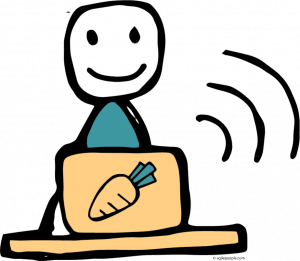 If you attend a course that is delivered online. Then we will work with Zoom for presentations and team exercises, Mural as a digital canvas, Trello for keeping track of the agenda items and exercises, and Slack for communication between the sessions. You will receive links to all of the tools used in the training including the Learning Management System that will provide you will all the documents and videos in between every session.
If you attend a course that is delivered online. Then we will work with Zoom for presentations and team exercises, Mural as a digital canvas, Trello for keeping track of the agenda items and exercises, and Slack for communication between the sessions. You will receive links to all of the tools used in the training including the Learning Management System that will provide you will all the documents and videos in between every session.
There will be some work to be done after every session, so add about 5 hours more every week. Course literature and material will be sent to your location and distributed digitally. The certification assignment will be accomplished in the time between the sessions so that you will be ready on the day of the last session.

